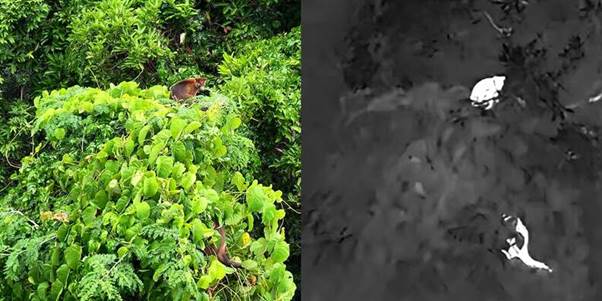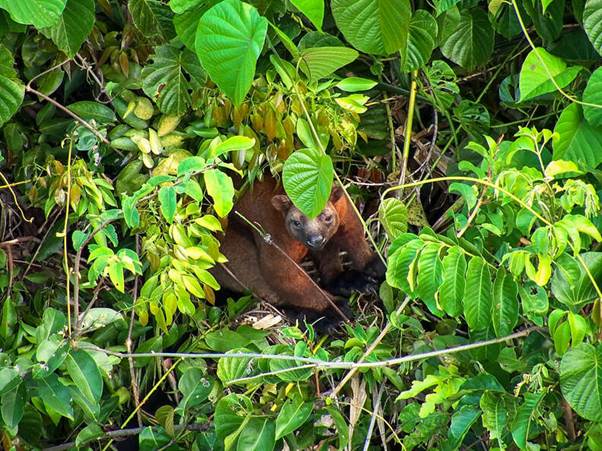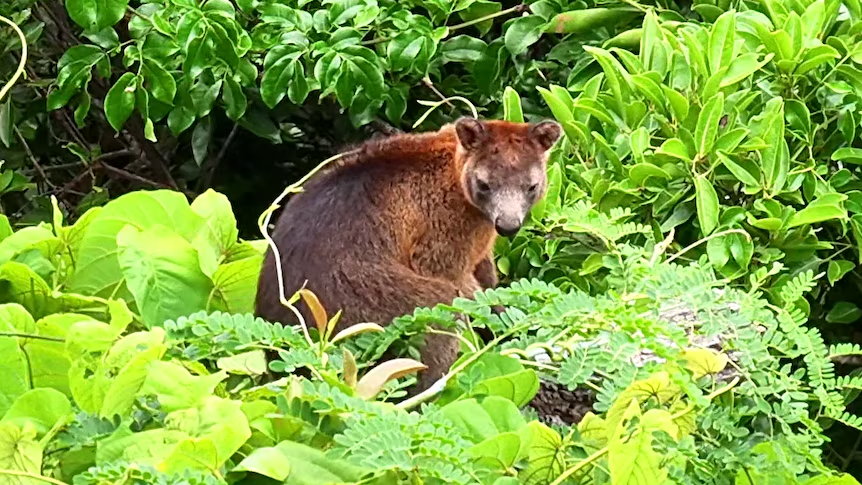A Creature Almost Lost in the Canopy
High in the misty rainforests of northern Australia and neighboring New Guinea lives an animal so rarely seen that many locals once spoke of it as if it were more legend than reality. Known as tree kangaroos, these unusual marsupials look like a cross between a wallaby and a possum, with strong tails and powerful limbs that let them leap gracefully between branches.
Despite their remarkable adaptations, tree kangaroos have managed to stay almost invisible to science. Their habitat is remote, steep, and cloaked in thick vegetation that makes human access nearly impossible. For decades, researchers would trek through muddy trails and dense understory, only to return with little more than footprints, droppings, or the occasional fleeting glimpse of fur.
But recently, a team of Australian researchers decided to approach the problem from an entirely new angle — quite literally. Instead of trudging through the jungle floor, they sent drones soaring above the canopy. What those machines discovered would change everything scientists thought they knew about these elusive creatures.

Drones Unlock a Hidden World
The breakthrough came when scientists fitted lightweight drones with thermal imaging cameras. These devices detect the heat radiating from warm-blooded bodies, allowing them to see animals that would otherwise be hidden under leaves or branches.
“Thermal drones have opened a window into a world that was almost impossible for us to observe,” explained researcher Emmeline Norris, who led the study. “For the first time, we can track tree kangaroos without disturbing them — and without spending endless weeks in the forest hoping for a single sighting.”
Within an hour of flight time, the drones picked up something astonishing. Six distinct heat signatures appeared on the screen, each belonging to a Bennett’s tree kangaroo — a species once thought to be vanishing due to deforestation and climate change. Spotting six individuals in such a short period was unprecedented.
“For years, we would consider ourselves lucky if we saw one tree kangaroo in a week of ground surveys,” Norris explained. “To suddenly find six in less than an hour felt miraculous.”

Why This Discovery Matters
The Bennett’s tree kangaroo is one of nature’s most specialized climbers. Unlike its ground-dwelling cousins, this marsupial spends nearly its entire life in the treetops. Its long tail provides balance, while its strong hind legs allow it to spring between branches with surprising agility. Yet despite its incredible skills, the species is far from safe.
Habitat loss due to logging and agricultural expansion has fragmented their rainforest homes. Rising global temperatures threaten to alter the delicate ecosystems where they survive. For conservationists, gathering accurate information about population sizes and locations is critical to creating strategies for protection.
That’s why this new research is such a breakthrough. With thermal drones, scientists can cover vast areas quickly, collecting detailed data without putting themselves — or the animals — at risk. It means they can begin mapping where tree kangaroos still thrive and which areas require urgent conservation measures.
“This technology gives us hope,” Norris emphasized. “We now have a way to truly understand how many tree kangaroos are left and what conditions they need to survive. That knowledge could be the difference between decline and recovery.”

A Hopeful Future for a ‘Near-Mythical’ Species
The findings from this study, published in the Journal of the Australian Mammal Society, mark the beginning of a new era in wildlife monitoring. Already, researchers are planning additional drone surveys to compare populations across different altitudes and forest types. The goal is to build a comprehensive picture of how these marsupials live — and what risks they face.
For locals in Cape Tribulation, where the sightings took place, the news has been met with excitement. Many residents had long told stories of tree kangaroos glimpsed at dawn or dusk, moving like shadows among the leaves. Now, science has confirmed what folklore suggested: these remarkable animals are still there, quietly persisting in the rainforest.
“Seeing their glowing outlines on the thermal camera was almost surreal,” one team member shared. “It felt like meeting ghosts that suddenly became real.”
The hope is that, with continued monitoring and targeted protection, these “ghosts of the canopy” will thrive once again. Plans are already being discussed for stricter forest protections and for using drone technology in other regions where tree kangaroos are suspected to live.
Ultimately, the study shows how blending modern technology with age-old curiosity can uncover wonders that were once out of reach.
“For the Bennett’s tree kangaroo,” Norris concluded, “this innovation might be the key that secures their future. From obscurity, we may finally bring them into the light — not just for scientists, but for all who care about the rainforest’s hidden treasures.”


